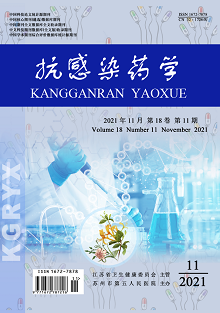ZHAI Yun-xia, SONG Hua-feng, ZHAO Jing, XU Ping
Objective: To analyze the efficacy of common cervical lymph node examination methods in clinical practice, to provide basis for reasonable selection of detection methods and judgment of detection results, and to provide help for accurate diagnosis and personalized clinical treatment of patients. Methods: 94 cases of cervical lymph node tuberculosis patients and 68 cases of control group were selected to compare the common clinical results of the two groups. The characteristics of lymphocyte subsets, blood routine, C-reactive protein (CRP), pathology, tuberculosis culture, TB-DNA, Gene Xpert Mtb/RIF, T-SPOT test for tuberculosis infection and other test results were analyzed, and different test methods were further combined to search for strategies to increase the positive rate of diagnosis. Results: In the lymphocyte subgroup analysis, T lymphocyte count and CD4+T lymphocyte level in cervical lymph node tuberculosis patients were higher than those in the control group(P<0.05), while NK cell levels were lower(P<0.001). The comparison of blood routine examination results between the two groups showed that the lymphocyte levels of cervical lymph node tuberculosis patients were lower than those of the control group patients(P<0.05), while the monocyte level was higher(P<0.001), and the difference of white blood cell(WBC) count was not statistically significant. The CRP level was significantly higher than that of the control group(P<0.001). The abnormal rate of clinical detection was 89.47%, and the positive rate of pathological detection was 96.72%. The positive rates of tuberculosis culture were 16.67%, and the positive rate of tuberculosis DNA and X-pert was 62.32% and 73.44%, respectively. The combination of different detection methods showed that the positive rate of tuberculosis culture + tuberculosis DNA test was 64.15%, the positive rate of tuberculosis culture +Gene Xpert Mtb/RIF test was 73.47%, and the positive rate of Gene Xpert Mtb/RIF+ tuberculosis DNA test was 79.03%. Clinical T-Spot tests were mostly screening, and this study found that up to 90% of patients had positive T-SPOT test results. Conclusion: Cervical lymph node tuberculosis has various clinical detection methods, and different detection methods have different validity. CRP had a strong suggestive effect, but no specificity. The positive rate of pathological test was the highest, the positive rate of TUBERCULOSIS DNA test and Gene Xpert Mtb/RIF test was higher, the positive rate of tuberculosis culture was lower, and the combined test could increase the positive rate. The positive rate of T-spot detection is high, which could be used for clinical screening.
